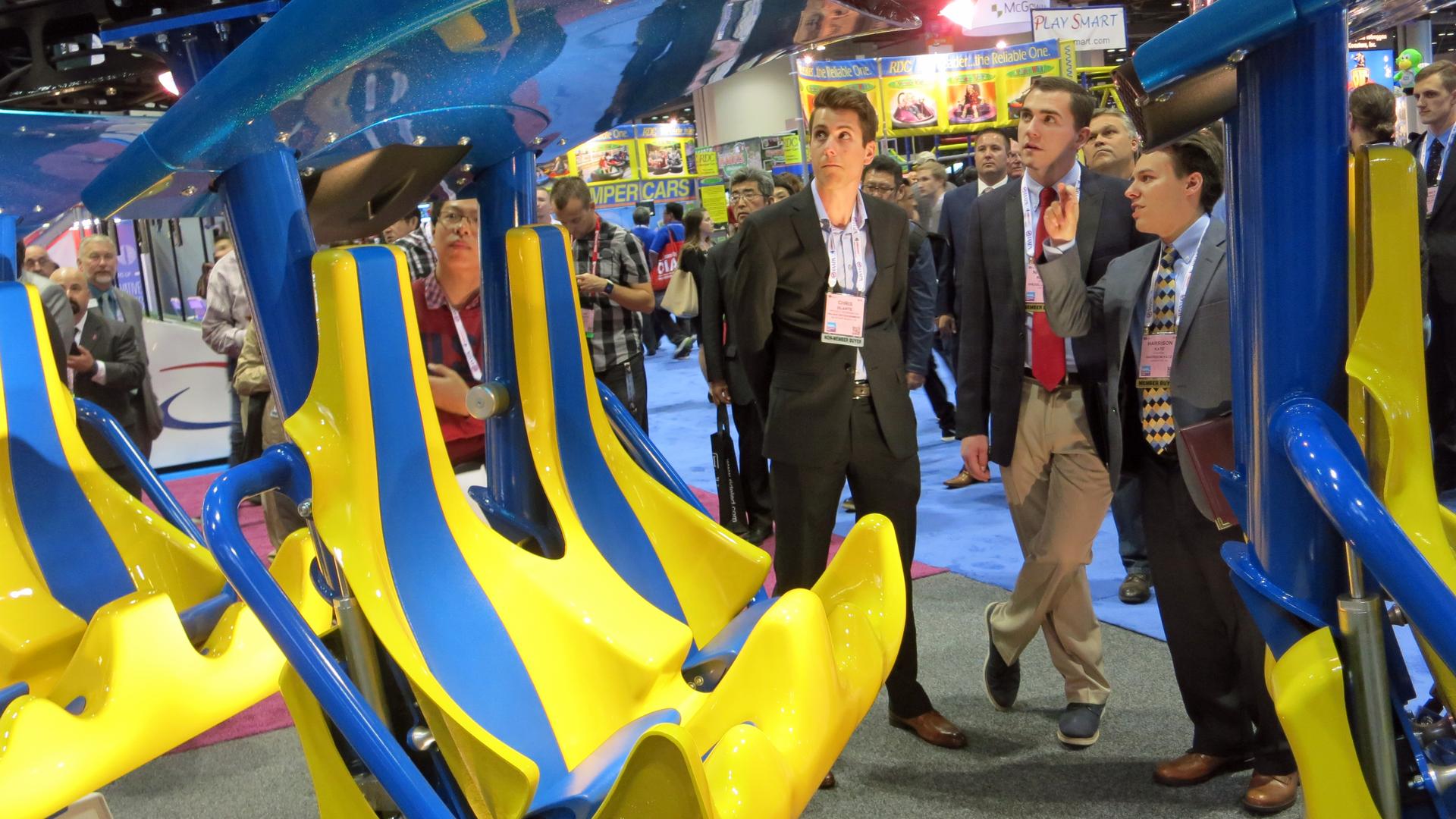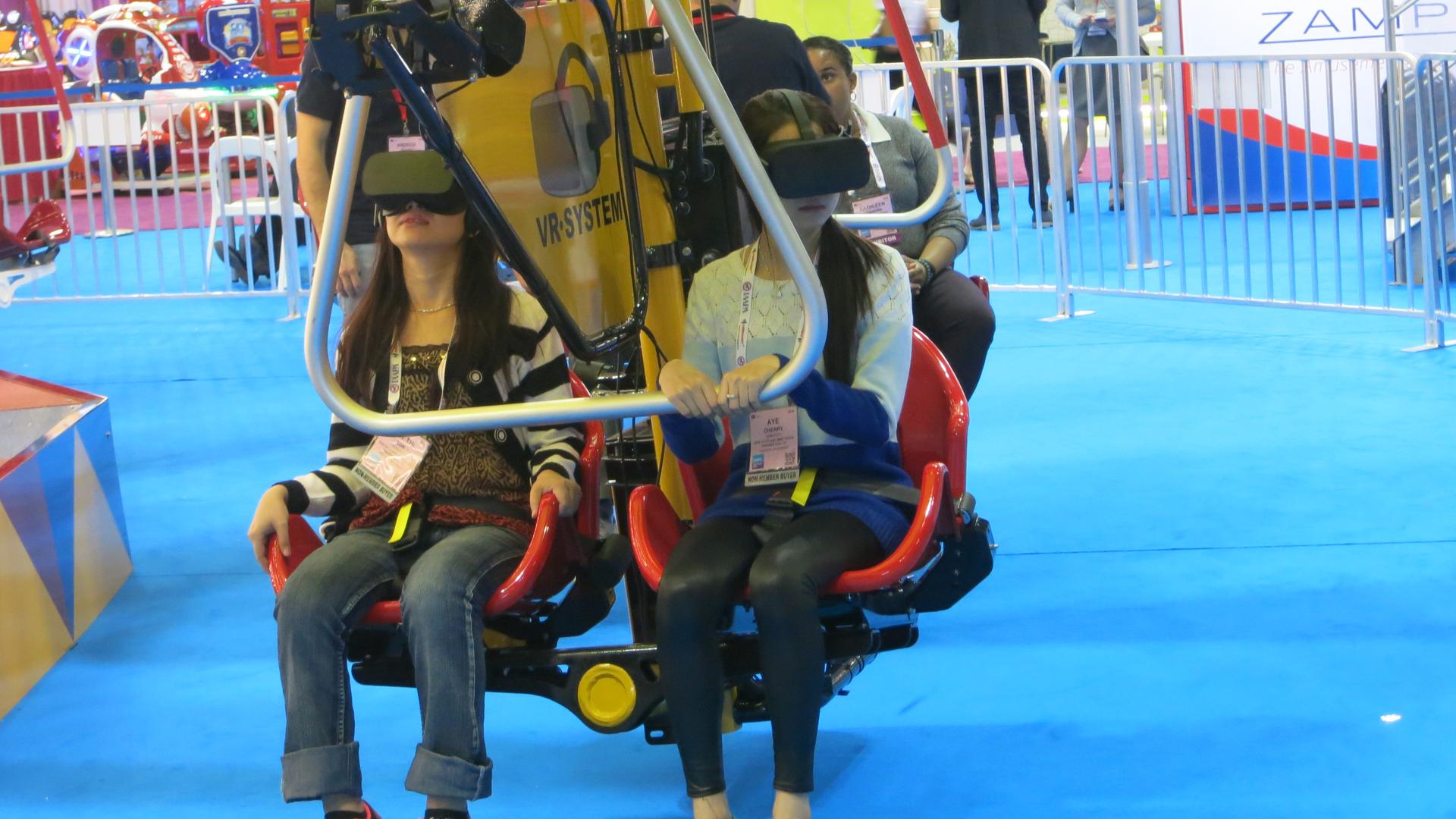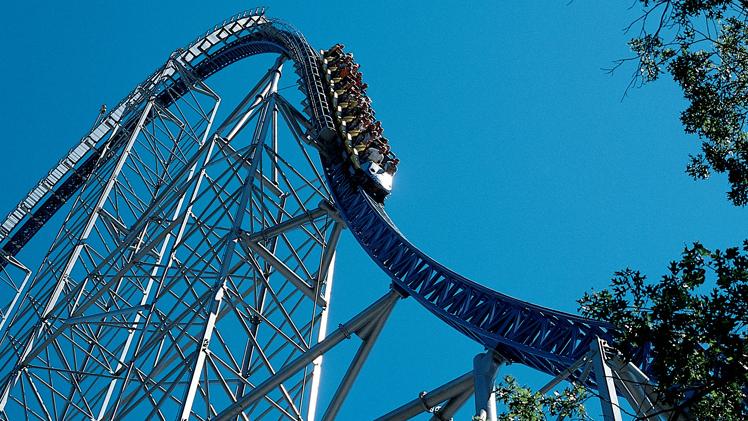At 310 feet, Millennium Force at Cedar Point in Ohio is now the world’s seventh tallest roller coaster. It was built by the Swiss company Intamin, which has designed seven of the world’s top 10 tallest coasters.
In the 1950s, Walt Disney wanted to build something the world had never seen before: a roller coaster using tubular steel track that allowed for greater twists and turns.
He turned to a local California manufacturing company to build the Matterhorn Bobsleds, an iconic ride still today at Disneyland. Top speed: 27 mph. Height: 80 feet.
These days, roller coasters zip along at speeds of more than 100 mph and can top 400 feet. Along with the rides, the business of amusement parks has evolved quite a bit compared with the quaint days of Walt Disney. Each year, amusement park operators congregate for a week in Orlando at the annual trade show expo for IAAPA, short for the International Association of Amusement Parks and Attractions.
The trade show has nine miles of aisles and more than 30,000 attendees looking to buy anything and everything that make amusement parks great. Park executives stroll the floor inspecting items ranging from a 16-foot gumball machine, to stuffed animals, to the latest flavors of fudge. And, of course, park operators meet with engineers who build roller coasters too.
“When we go to a company, we really just say: 'longest, tallest fastest, or something that no one has ever done,'” says Rob Decker with Cedar Fair Entertainment, which owns and operates 11 amusement parks in North America.
Its park, Cedar Point in Sandusky, Ohio, is known for pushing the extremes. There, Cedar Fair built the first coaster over 200 feet in 1989. Eleven years later it topped 300 feet, “and once you hit 300, 400 was on the horizon,” says Decker.
“So we built Top Thrill Dragster in 2003," he says, "420-feet tall, a launch coaster that goes 0 to 120 miles per hour in under four seconds.”
That’s like racing up a 40-story building, then plunging straight back down. For its biggest, baddest rides, Cedar Fair has turned to Swiss and German manufacturers. A lot of park operators at the expo turned to them also.
“They put a lot of effort into the engineering," Decker says. "And they were willing to take a chance to build something that had world domination, world-record scale, and not feel they had to repeat that ride and duplicate that somewhere else to make their commercial enterprise viable for them."
oembed://https%3A//www.youtube.com/watch%3Fv%3DLbN3NU4hIZg
The only roller coaster designer that’s topped 400 feet — and done it three times — is Swiss-based Intamin.
“Basically, there is a long history in Germany of building amusement rides, and also precision engineering, engineering design,” says Intamin president Sandor Kernacs.
The company’s highest ride: 457 feet, the Kingda Ka coaster at Six Flags Great Adventure in Jackson, New Jersey.
And how high they can build?
“Well, there is actually no limit,” says Kernacs. “Everything depends on the ride experience and also the cost.”
Big roller coasters typically cost $25 million to $35 million.
American builders used to do quite well in this market, and US companies still make some great rides, especially wooden coasters — there’s a lot of industry buzz about Rocky Mountain Construction, a company that opened in 2001 in Idaho.
But when it comes to the premier, marquee steel coasters, the ones you look at and say, “There’s no way I’m getting on that,” Switzerland and Germany have been on top for about 20 years.
“It really comes down to German and Swiss engineering,” says Martin Lewison, an assistant professor of business management who studies the amusement park industry at Farmingdale State College in New York. Lewison has been on 1,478 coasters according to “Coaster Count."
Besides top engineering, Lewison says the Swiss-German manufacturers have also built better business models: Historically, they’ve been more diversified, selling other products from ski lifts to agricultural machinery.
“It’s a tough business,” says Lewison. “These companies come into and go out of existence with disheartening regularity."

During tough economic times when amusement parks hold back on big-ticket purchases, it helps to have other products to sell too. One company that understands this is Mack Rides in Germany.
“The Mack company is now 236 years old, so we opened up our business in 1780,” says Maximillian Rousey, Mack’s head of marketing.
Of course the company didn’t begin back then making coasters.
“We came from the manufacturing of carts mainly for bringing the wood from the black forest down to the Rhine River, and then to bring it onto the ships,” says Rousey.
From there, Mack moved into carnival rides, and eventually the big steel coasters along with many other types of amusement park attractions. The company has stood the test of time, but in this business you’re only as good as your latest creation, and Mack is now looking to virtual reality on roller coasters. Every ride can be different, a journey through the desert, the mountains, or wherever.
“Each and every passenger gets goggles. It’s synchronized with the roller coaster, so you won’t get motion sickness because your brain is feeling the same as you’re seeing,” says Rousey.
If he’s right, the Swiss-Germans could enjoy many more years on top of the roller coaster game.

